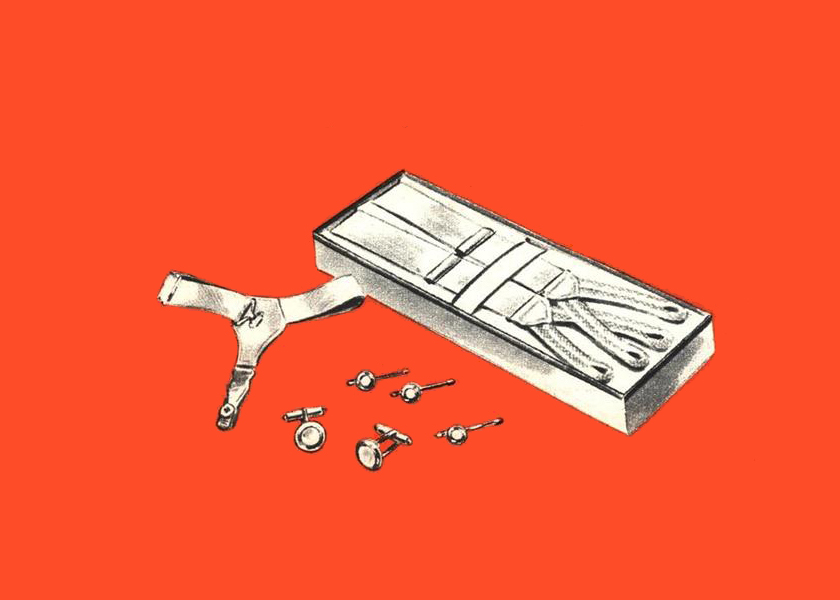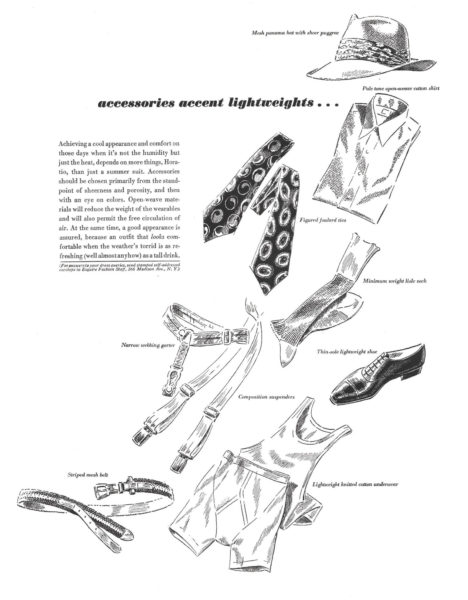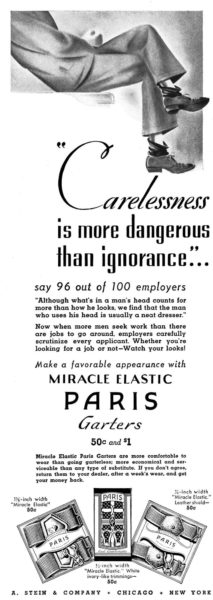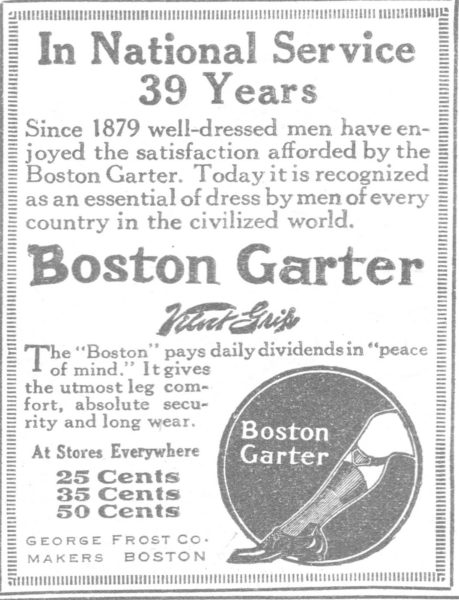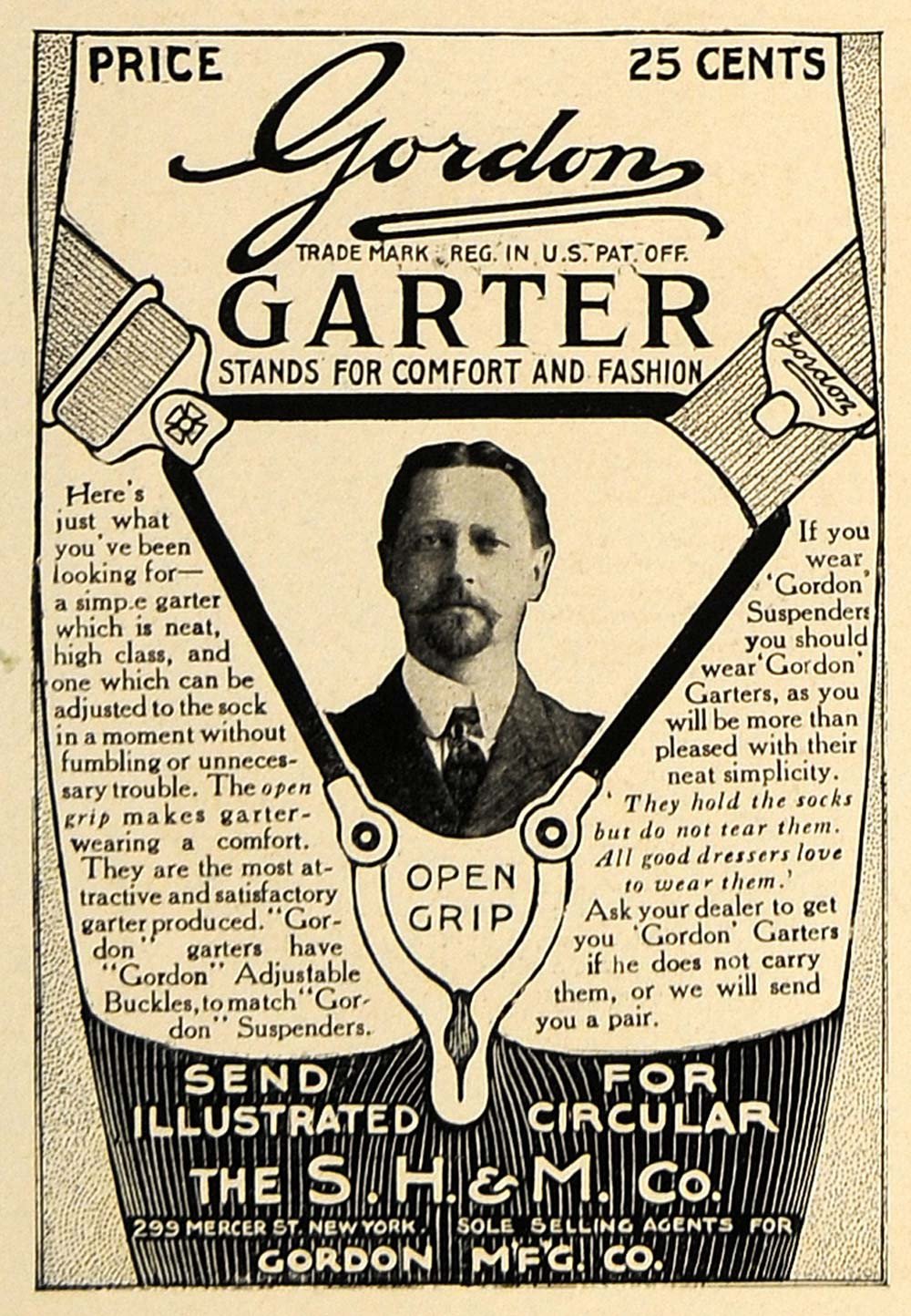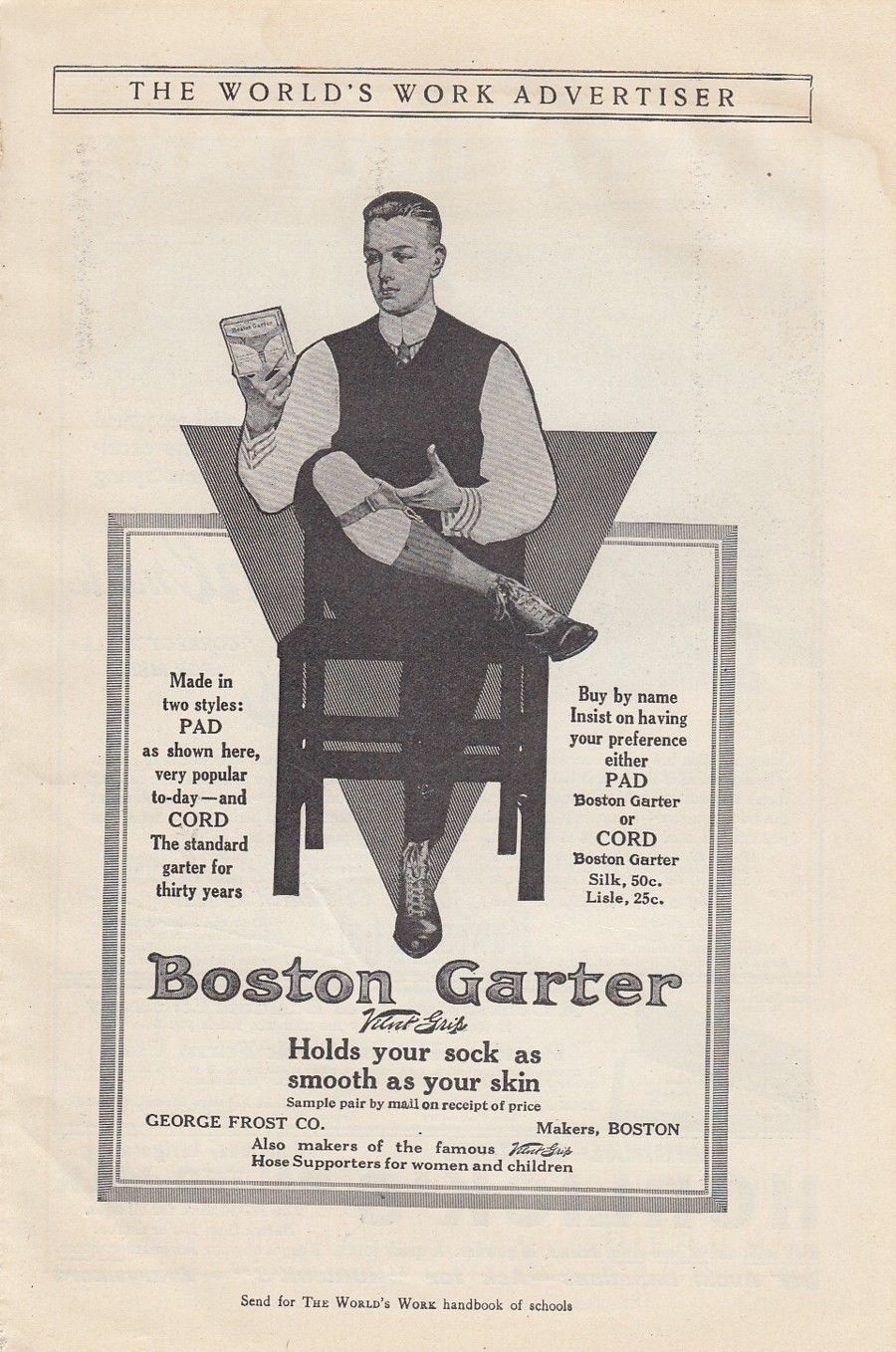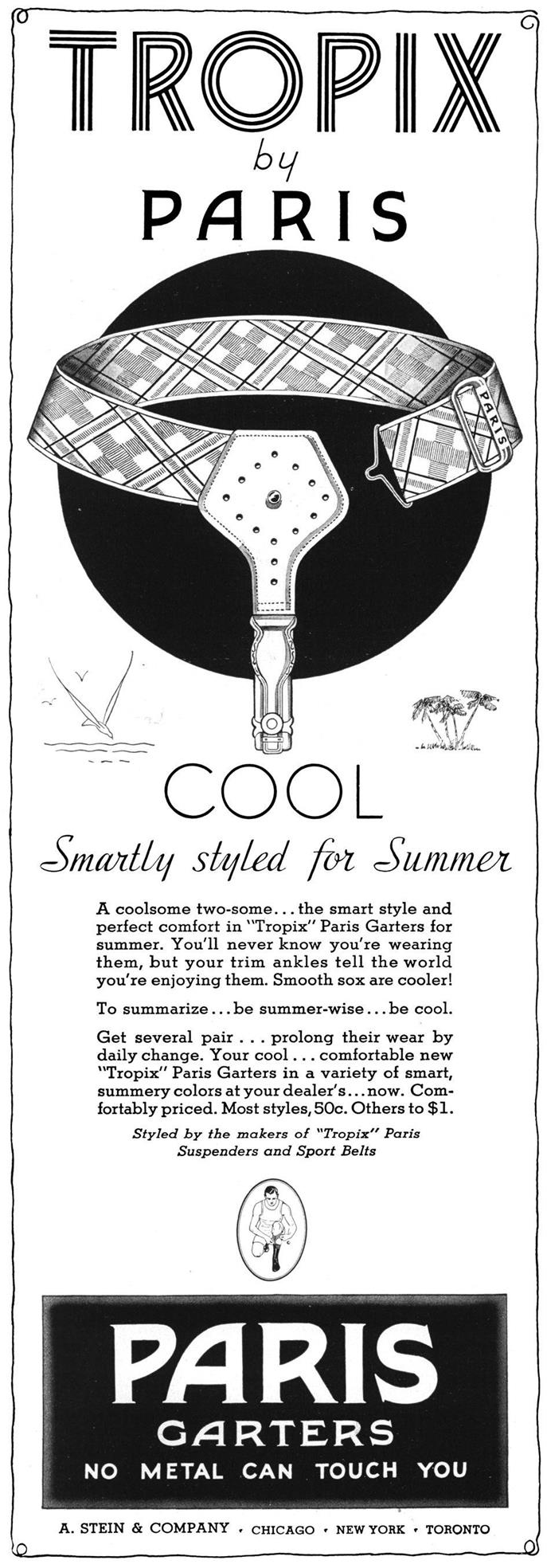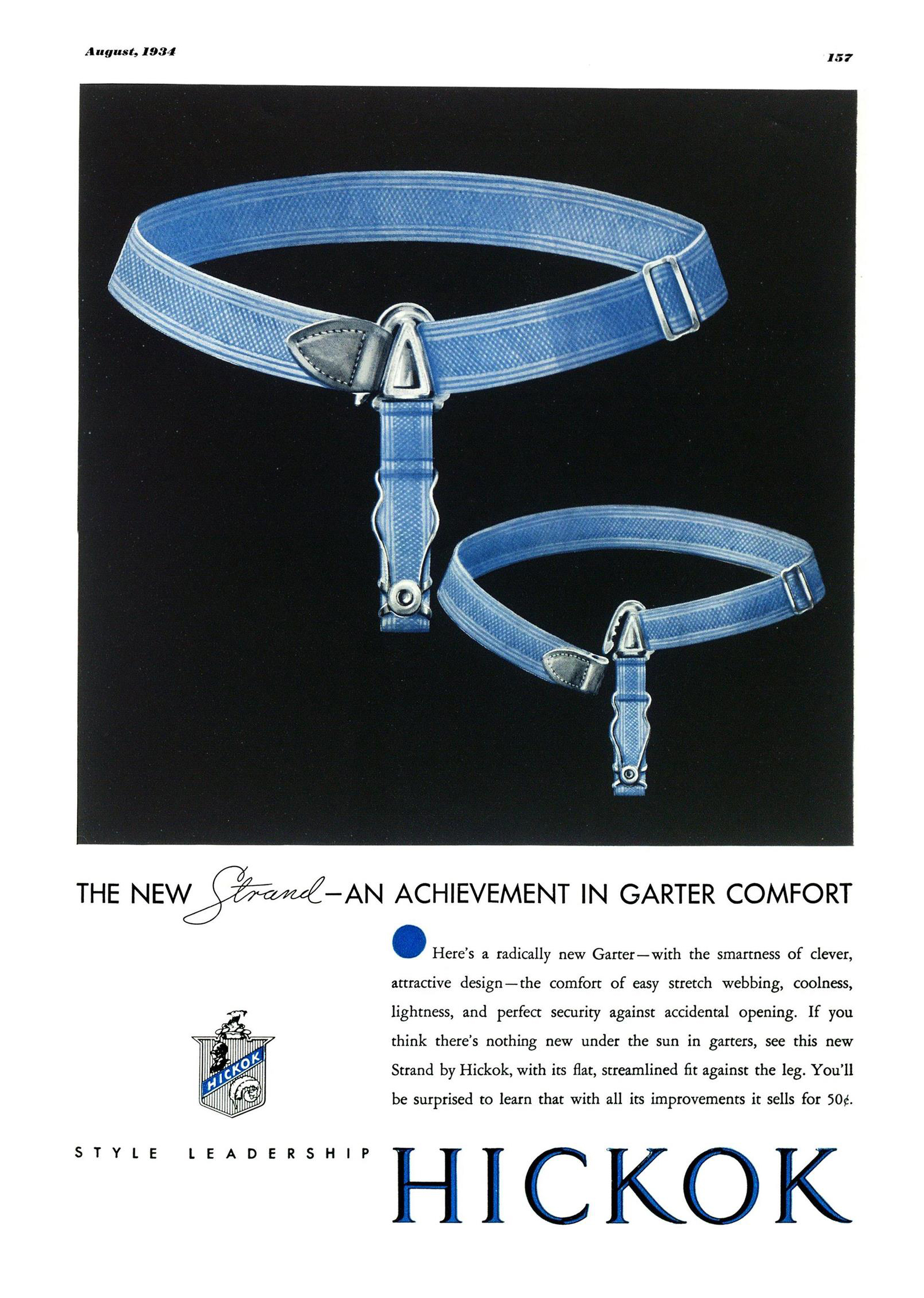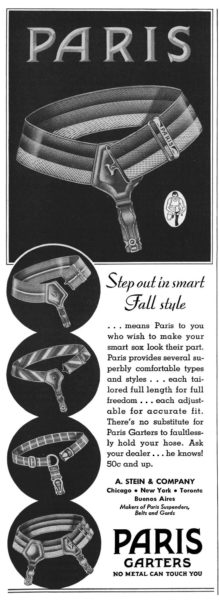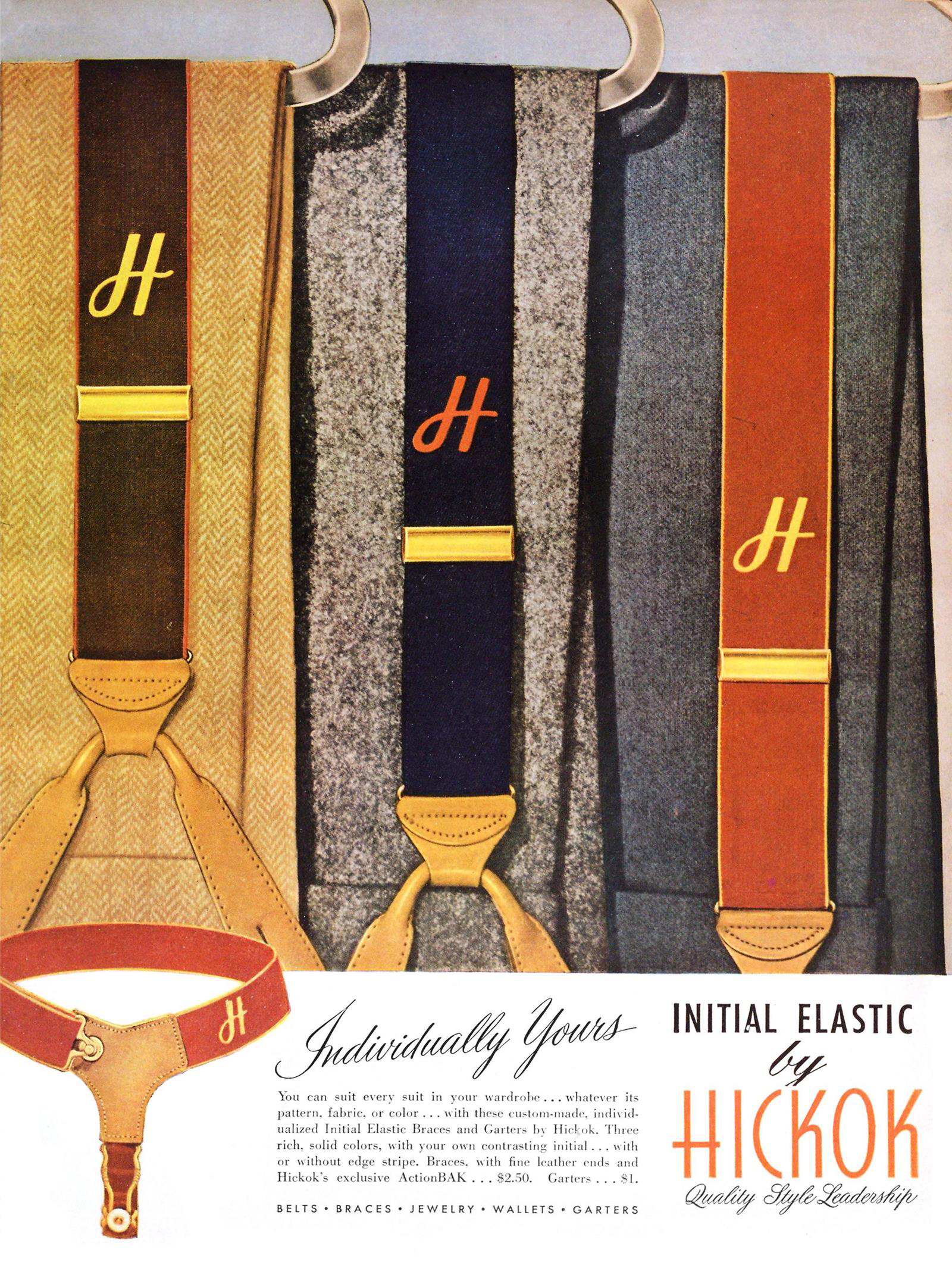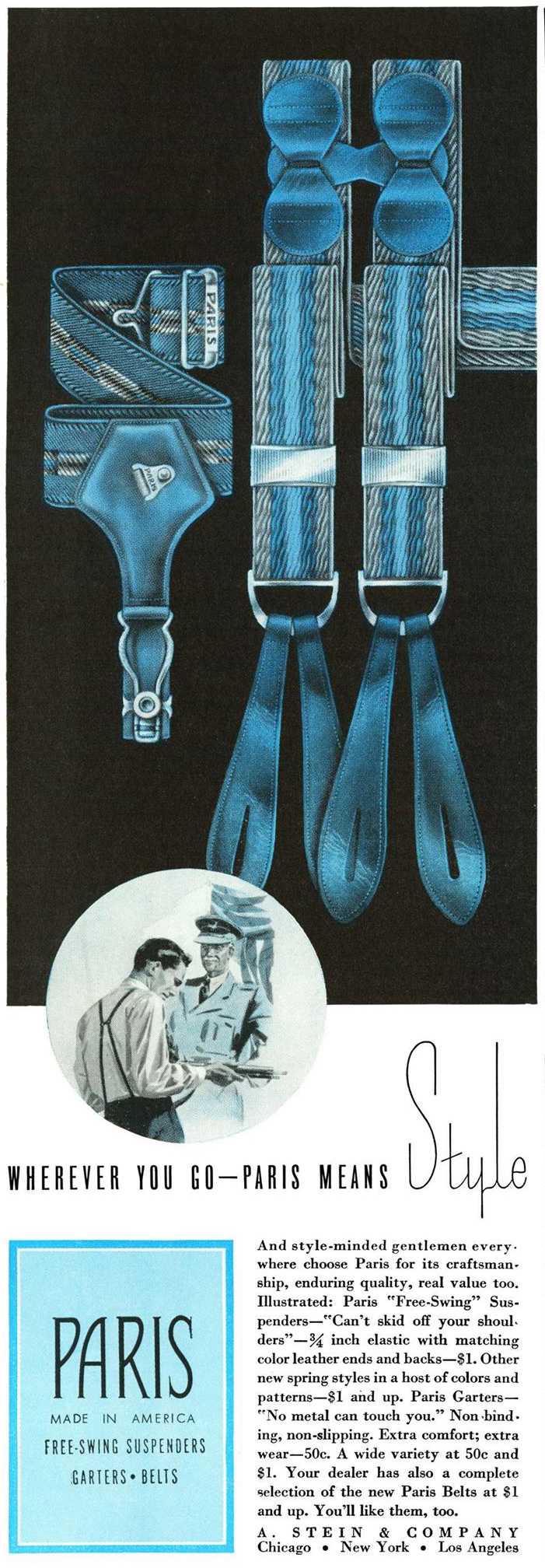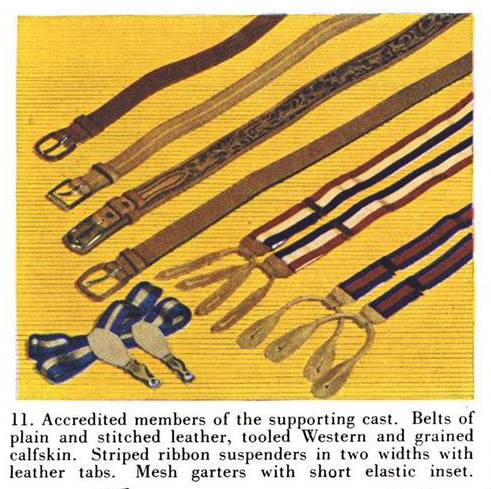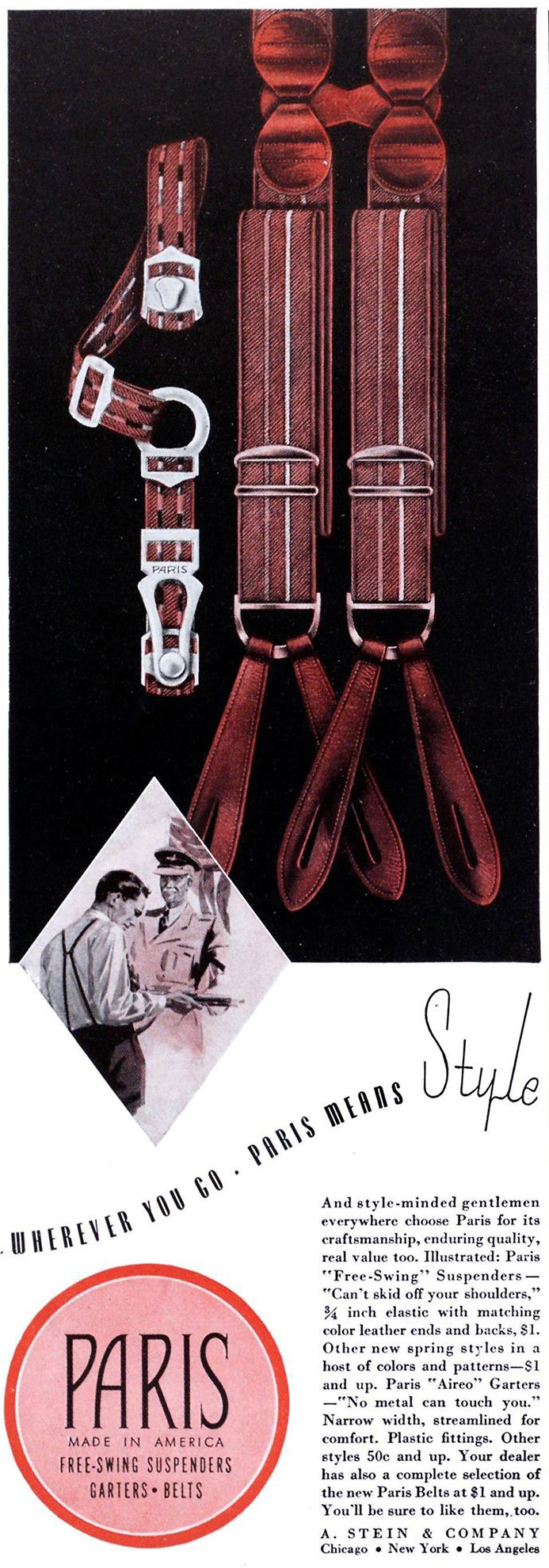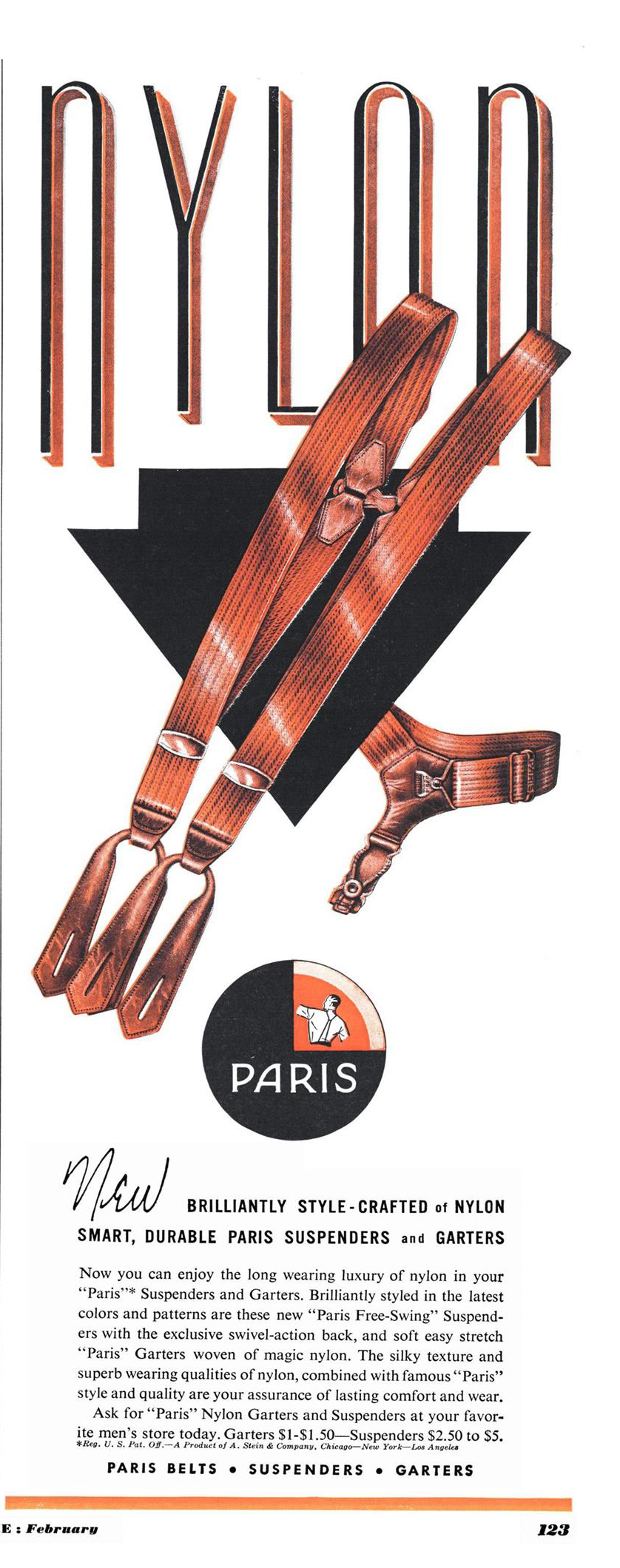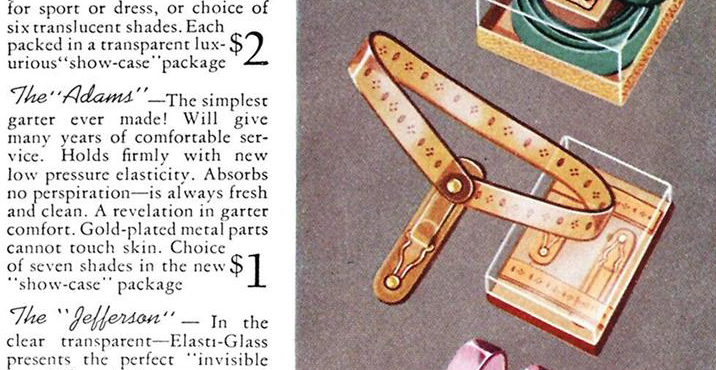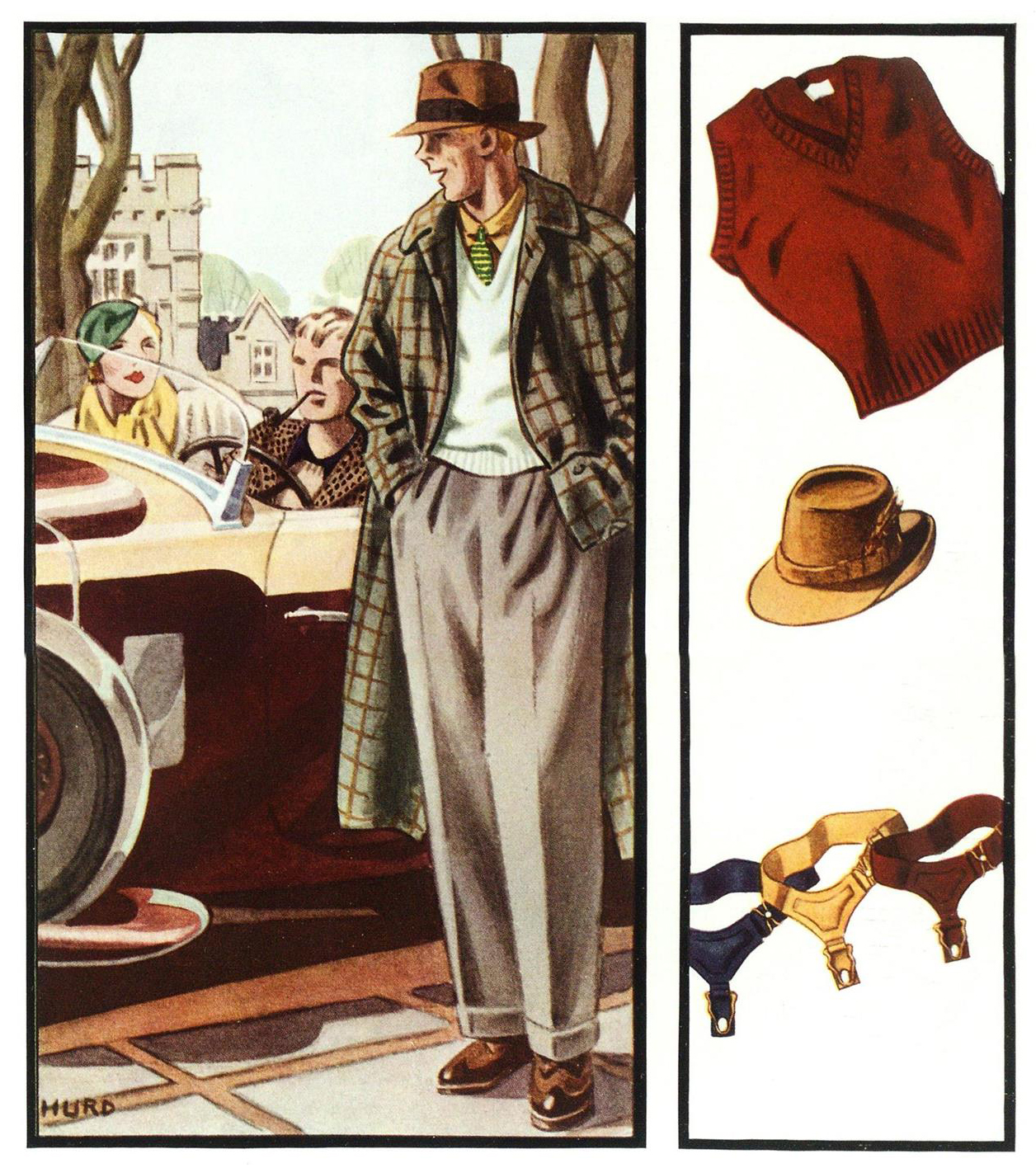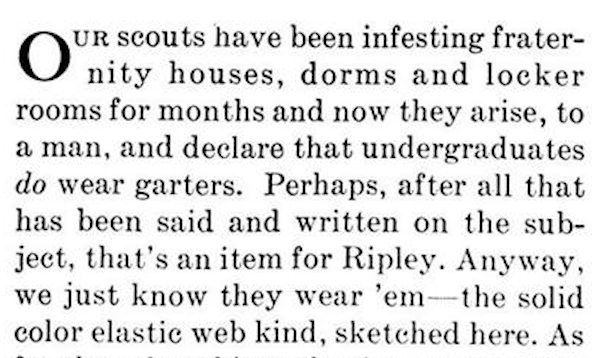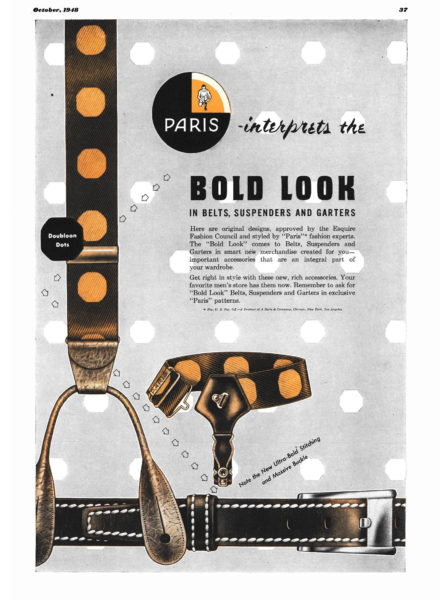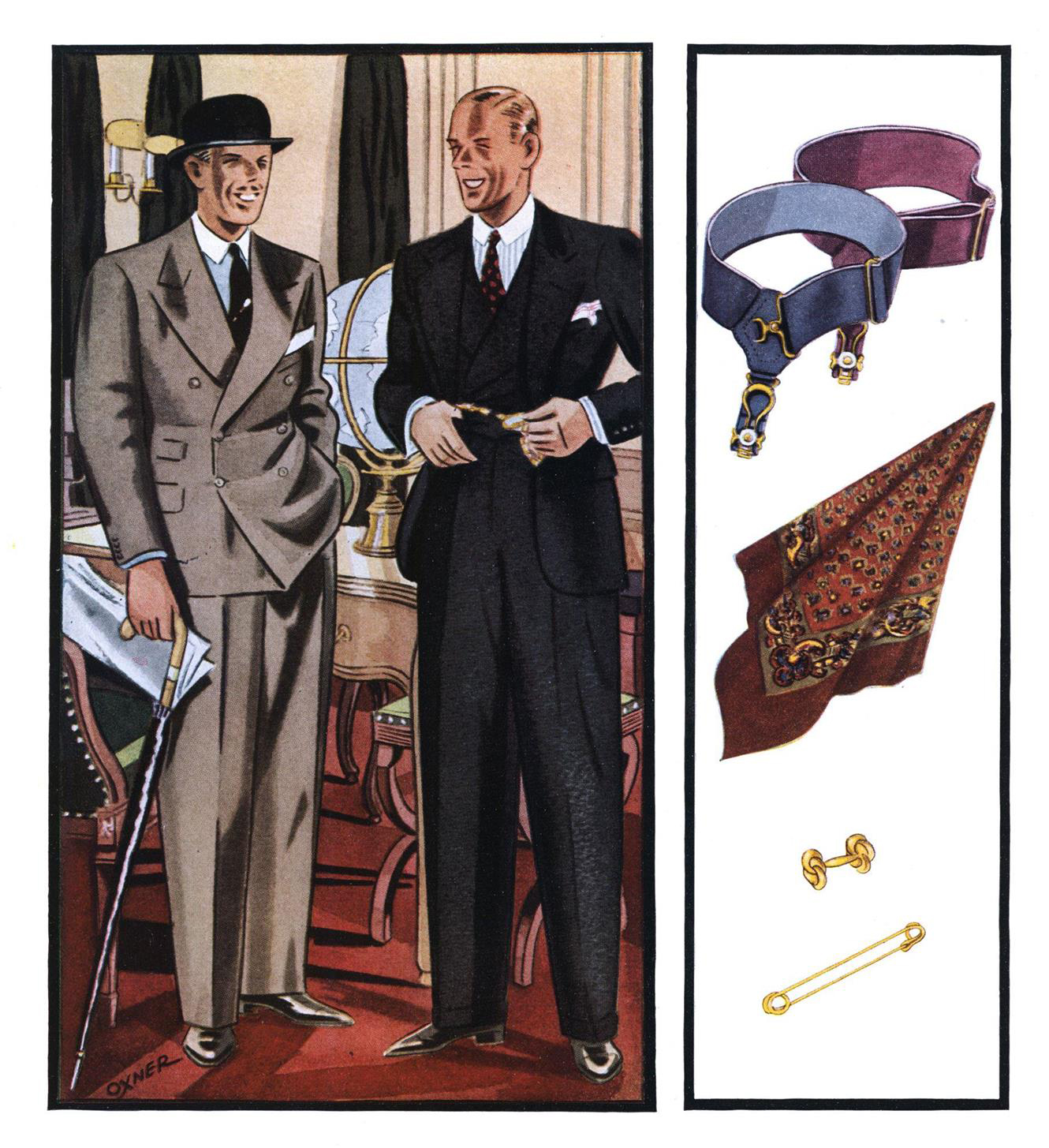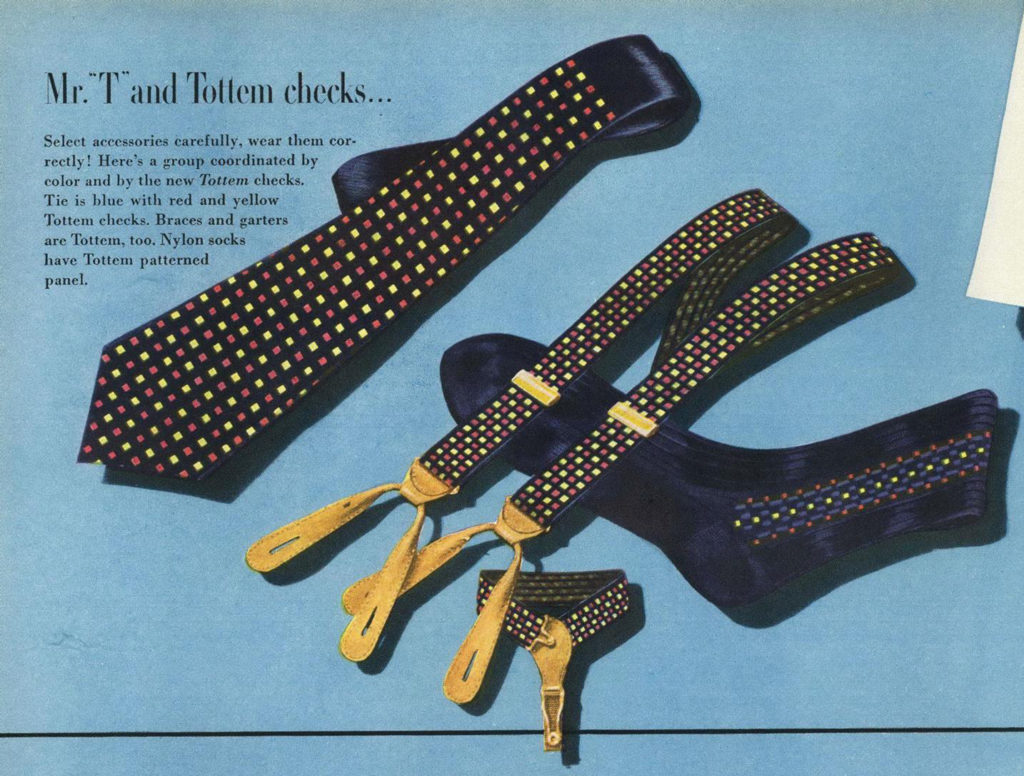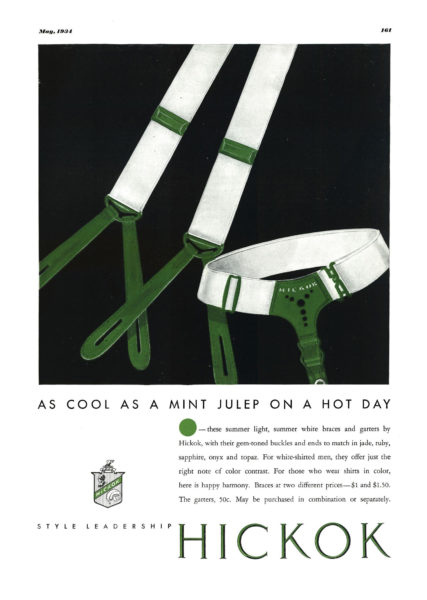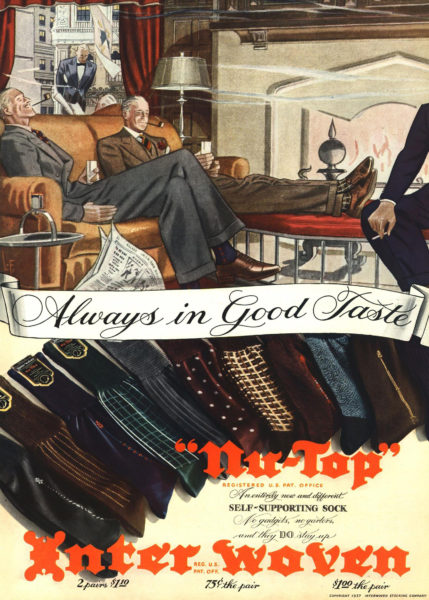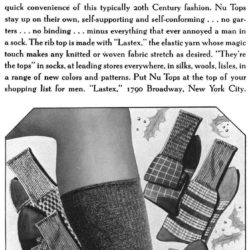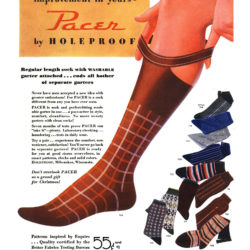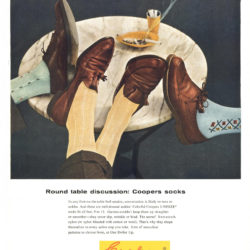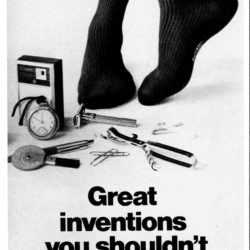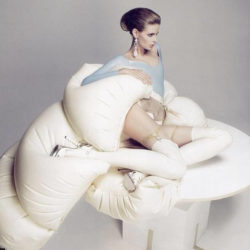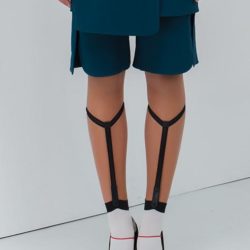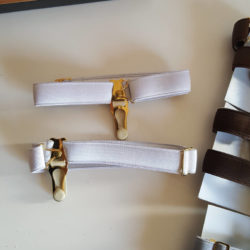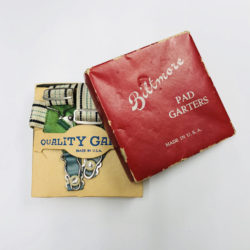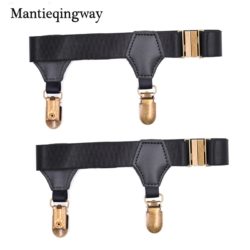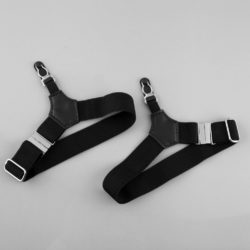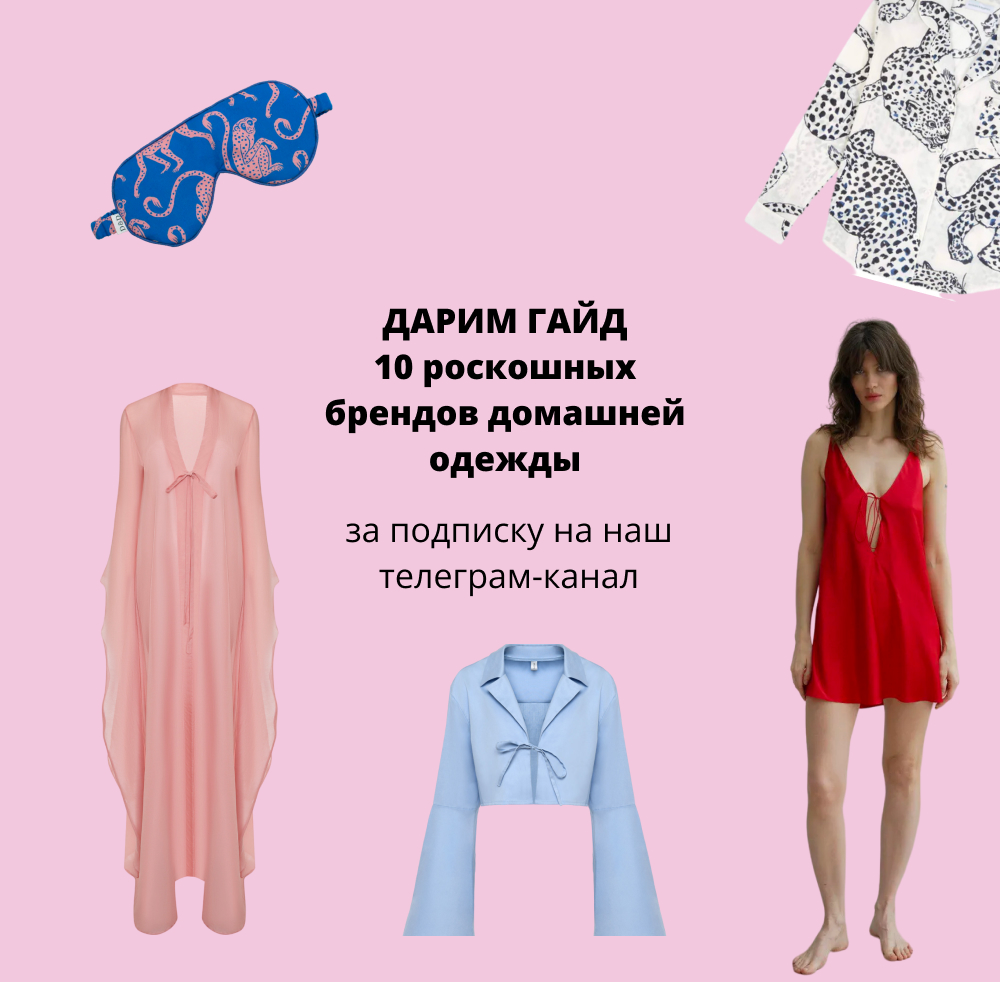Let’s go back to the time when the dropped sock or bare ankle was incompatible with the image of a real gentleman. From 1880 to 1960, the socks of most men, at least in England, the United State, and France, were saved from falling by unique garters. “So I have enough inferiority complex to let my socks fall. How can you be confident, if you cross your feet and show naked skin? “- says Peter McManus, one of the characters of the movie “Down With Love!”, which unfolds in 1962. What his opponent replies is that due to new inventions such as lycra, marlon, and dacron, garters are no longer needed since socks are perfectly kept on the feet without this accessory.
Both names “sock garters” and “hose garters” can be used. The word “Hose” was used earlier to denote hosiery products, among which were socks, too.
Garters take a considerable part in the long history of costume. I was interested in a short period when clips appeared on the garters and when they began to be used to hold socks from shameful rolling down. It should be noted that the socks quite poorly used to cope with their duties because they were inelastic.
The very first mention of sock garters, which I managed to find, is 1879. In the advertising campaign of George Frost Co. 1918 states that “Since 1879, well-dressed men have enjoyed the satisfaction afforded by the Boston garters.” Besides, the trademark “Boston Garter” was registered by the campaign in April 1910.
Among the most significant socks garters at that time were Crown Suspender Company, S.H.&M Co., George Frost Co., Pioneer Suspender Company, A. Stein & Company, Hickok, Gem-Dandy (If you are looking for vintage garters, you can search for the names of these companies).
Almost every company registered a separate trademark for sock garters. In the ads for the garters, you can find the names Brighton, Boston, Gordon, Paris, and others. This is absolutely not a variety of products, but simply trademarks: names that were convenient to use for product promotion and differentiation from other manufacturers.
- Advertising for Gordon Garters by S. H. & M Company, 1906
- World’s Work Magazine (April, 1912), Boston garters adv by George Frost Co.
- Esquire, June 1, 1937. Advertising for Paris sock garters by A. Stein & Company
- Pioneer Suspender Company advertisement. Brighton silk sock garters advertisement
Concerning the types of socks garters, I assume that the first ones in the period under study we saw were garters, where the central part and the clips were connected by a cord, as shown in the photo below. And the first “clips” most likely were pinching socks (as in a picture of Gordon garters above).
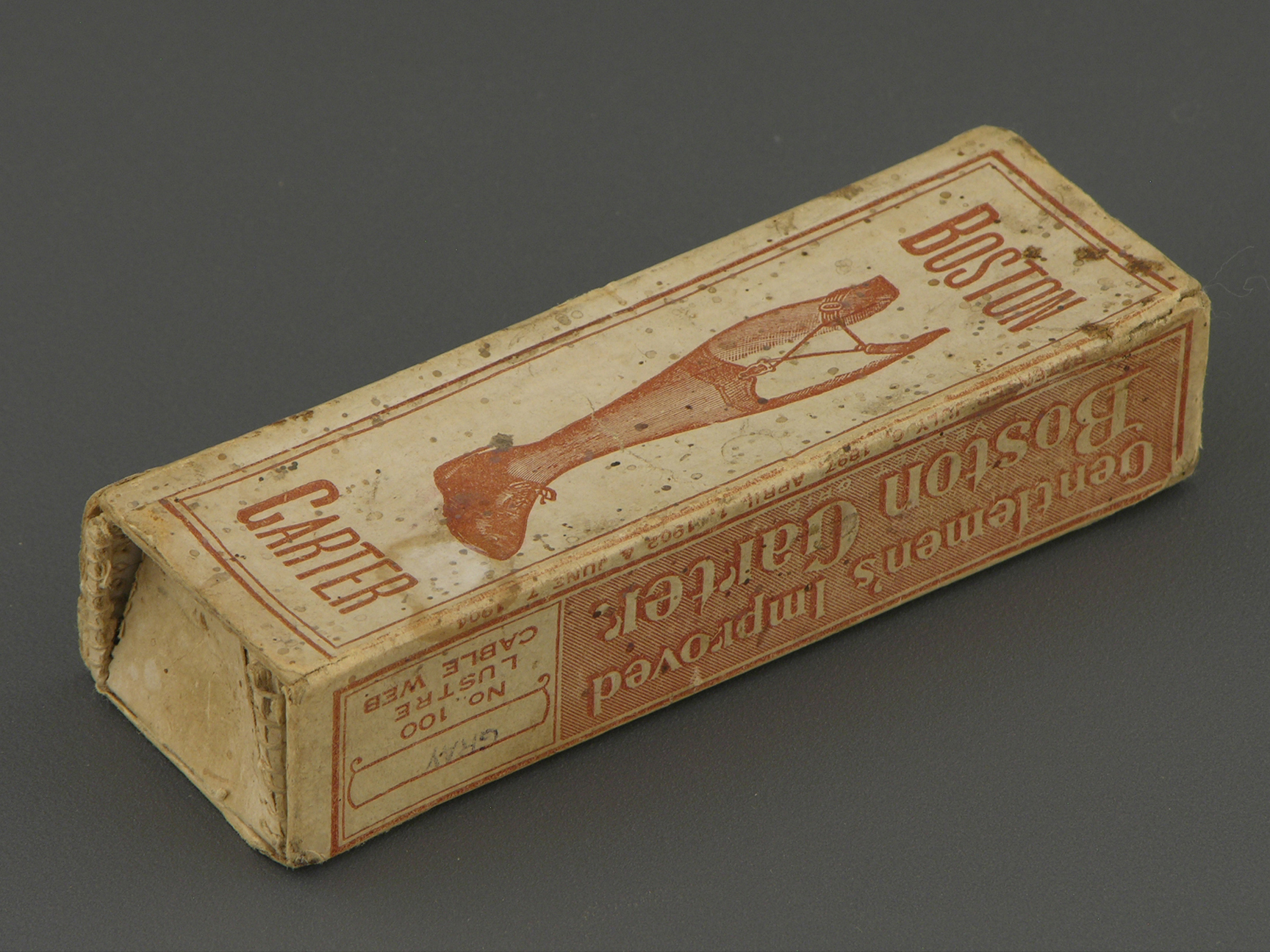
A box from the Boston sock garters with the marking of 1897, the museum EL MODO DEL MODO
The types of garters constructions have evolved, and manufacturers have often experimented with them.
- Esquire, December 1, 1934. Advertising of Pioneer sock garters. Pay attention to the buckle from above and to the clamp.
- Esquire, August 1, 1934. Advertising of Hickok sock garters. Unusual clasp on top.
Many types of garters constructions and clasps existed in parallel. As can be seen from the 1937 advertising in Esquire, one of the manufacturers offers options to choose from, a buckle lock and some holders (up to a maximum of two).
Color
The socks garters came out not only in the dull black, white, brown and gray: the manufacturers offered a wide range of colors and their saturation. The suspenders for socks could be found in pastel shades (1912 advertising, featuring possible color options for the Boston garters, Victoria and Albert Museum), and in saturated bright colors.
- Esquire, May 1, 1947. Hickok sock garters advertisement. Those garters could be customized with it’s owner embroidered initials.
- Esquire, March 1, 1941. Paris sock garters advertisement.
- Part of the illustration in Esquire, July 1, 1934
- Esquire, April 1, 1941. Paris sock garters advertisement.
- Esquire, February 1, 1950. A. Stein & Company Paris sock garters advertising
- Esquire, December 1, 1939. S.Buchsbaum & Co. sock garters advertising
The Esquire magazine notes that in 1934, fashionable youth, college graduates, preferred bright sock garters.
- Esquire, March 1, 1934. Illustration to the article about the fashion of college graduates “What? Garters On A Page Of College Fashions? Yes, Sir”
- Esquire, March 1, 1934. Part of the article about the fashion of college graduates “What? Garters On A Page Of College Fashions? Yes, Sir”
In addition to the monochrome classic “striped” variants from time to time, there were also more bold prints.
Style
Colored garters could be selected to match either the color of the shirt or the tie.
In the book “Esquire’s Encyclopedia of the 20th Century Men’s Fashions” by O.E. Schoeffler says that socks, panty braces and socks garters should be matching a tie.
Lovers of strict style and white shirts are advised to add joyful colors, and colored suspenders for socks combine with the colored ones for pants.
Zenith of garters
The garters started to lose their popularity around the 1960’s, even though previously they became a part of the gentleman’s dress code. If judged by advertising in the magazines of that time, the last time the garters were mentioned was in the 1950s.
The socks garters along with the slogan “No metal can touch you” are replaced by the advertising of socks and such slogans as “No gadgets. No garters. ”
The reason is the appearance of elastic materials, which help the socks to keep their shape and not fall from the leg. In 1929 there appeared lastex – a fabric based on a latex thread. The lastex was added to other materials such as cotton, silk, or viscose so that they can stretch in one or two directions and be elastic. The advertising of lastex socks, which did not require suspenders, appears in the 30s, at the same time as advertising for hybrid socks, in which the socks cuffs was sewn on the manner of the garter (only in the front). Following the lastex, there were other synthetic fabrics with high elasticity.
- Esquire December 1, 1936. Advertisement of socks with lastex
- Esquire, December 1, 1935. Advertising of hybrid socks with built-in “garter”
The problem of falling socks was solved, meaning the necessity for the garters’ function was no longer there. Only those men for whom this accessory became habitual and associated with a stylish canon remained loyal to this accessory.
- Esquire, June 1, 1956. Cooper’s socks advertising
- Esquire, October 1, 1969. Socks adv
Garters nowadays. Stylish Renaissance on a small scale
If the sock garters left the scene in the 1960s, it’s funny that articles arguing whether to wear them or not from the practical arose up around 2003 (an article in the GQ). In many nowadays articles by men for men argue that the accessory is not functional, and is asexual.
I do not agree with the authors of these articles about the “asexuality” of the garters and the context. Sock holders can be sexy, both for men and for women. Moreover, not restrained by any strict limits, we can transform the garters into an active accessory that is visible. We can, and we transform.
In 2010, sock garters appeared in an article devoted entirely to the trend of this accessory in the Fashion Spot magazine. In 2012, sock garters appeared in the August issue of the French Elle.

Elle France August 2012.
“Girls in America” edited/styled by Marie Lichtenberg, photos by David Burton.
Still, a small Renaissance for the garters happened in 2009-2011. The trend for garters or things inspired by them can be found in the collections of Alexander Wang, Christian Dior, Chalayan, Kate Sylvester.
The next manifestation of the micro-trend is in 2014-2018. This time, the garters appear in the collections of lingerie and leather accessories brands: Murmur (the garters were a part of the 2014 Roleplay collection, they are not currently on sale), Zana Bayne (leather garters appeared in 2014 and available now to order), La Perla (silk garters Frames appeared in 2015 and are available in some colors now), Edge o’Beyond (Colette garters from the 2017 collection, available for order), Atsuko Kudo (laconic stylish latex garters), Marika Vera (socks with garters).
Sock garters are part of many subcultures: stim-punk, burlesque, pin-up. It also fits into the cultural code of the costume of the 20s-50s and neo-Victorian style. With the celebration of female or male power and sexuality, the garters cope as well as chokers and harnesses. Also sock garters, moved to the leg much higher, can become a good partner for a couple of stockings in the boudoir.
The garters’ habitat nowadays
Vintage and modern variations of garters can be found on the following sites:
- Hunt & Holditch at Woods of Shropshire shop
- Albert Thurston
- Sheehan & Co. Leather Sock Suspenders
- Amazon
- Ebay
- Etsy
- Sockdreams
Cover: Esquire archival illustration
